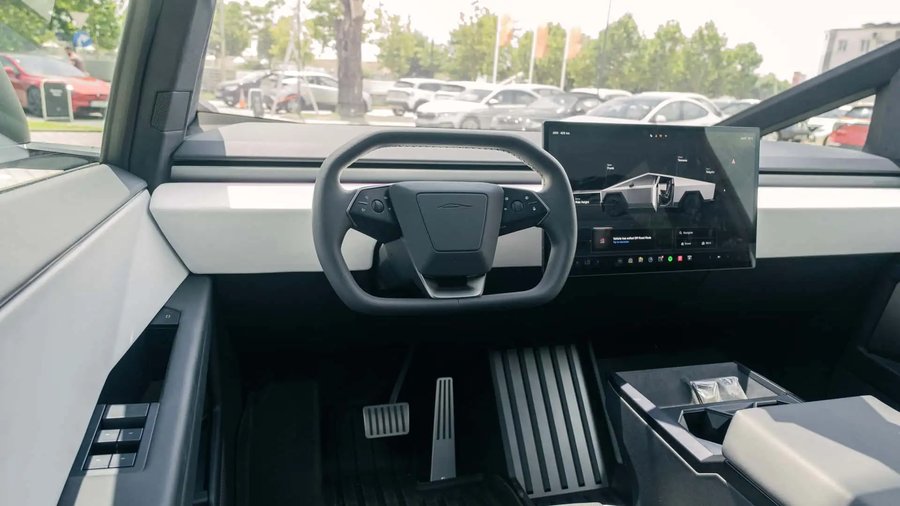Elon Musk Has A Crazy Idea For Yoke-Equipped Teslas

Elon Musk wants the steering wheel in steer-by-wire-equipped Teslas to stay centered while on Autopilot. The only Tesla equipped with steer-by-wire is the Cybertruck. Tesla is mainly betting on autonomy and its Full Self-Driving technology, and less on newer and more affordable models.
Steer-by-wire opens up a lot of new possibilities for how we will drive cars in the future since it implies that there isn’t a physical connection between the steering wheel and the wheels. You could easily drive a steer-by-wire-equipped vehicle equipped with a gaming console controller or something completely different that wouldn’t require the arm twirling typically associated with steering wheels. We’ve even seen concepts whose steering controls are designed to retract into the dashboard when they drive autonomously, but no manufacturer has announced plans to put something like that into production.
Tesla isn’t a typical automaker, though. And CEO Elon Musk reportedly said in the past that he wants to remove the steering wheel from the company’s cars. One book claimed he insisted that the Model Y launched exclusively as a self-driving car without a helm, but Tesla engineers put one in anyway and created the world’s best-selling car of 2023.
More recently, Musk took to X to express his opinion about steering wheels in cars. He explained that in Teslas with steer-by-wire (which currently only includes the Cybertruck), the yoke should not move with the steering while the vehicle has Autopilot enabled. This was a reply to a video posted by a Cybertruck owner who was happy to see his vehicle’s yoke move on its own while the vehicle was automatically parking itself.
X users rightfully questioned how the driver could take control in a dangerous situation, prompting a barrage of comments challenging this point's validity. Frankly, not having the yoke turn with the angle of the wheels would make it very hard to intervene, even if it instantly started moving to the correct position when Autopilot was disengaged.
Plus, it just kind of looks cool to see the wheel turn on its own, like when you're in a Waymo robotaxi, which currently actually delivers the kind of autonomy Tesla has been promising for some time.
But Musk may have a point that during a self-parking maneuver, the wheel in the Cybertruck doesn’t need to turn since you could stop the maneuver simply by stepping on the brake if you saw it was about to hit something. Our experience with the refreshed Model 3 revealed that relying on the Autopark feature, which lacks ultrasonic sensors and solely relies on cameras for parking, can be risky.
The steering wheel could remain fixed in place when you summon your Tesla, for instance, since there wouldn’t be anybody in the car to move the wheel anyway. However, we don’t see any other use case for this with the current state of Tesla’s semi-autonomous driving tech, which is still a few steps removed from being truly autonomous. Full Self-Driving is incrementally getting better, and it’s probably the most advanced such system in the industry, but it’s still far from finished.
Elon is known for his left-field ideas that he seems convinced about but gives up on over time probably engineers explain why they are impossible to implement. Keeping the yoke fixed while on Autopilot could be another one for that list, at least until Tesla proves that its vehicles can drive themselves without the need for human supervision (and interventions). That point is still a few years in the future, but rest assured that when Tesla does finally reach it, probably with the next generation of vehicles, yokes and steering wheels will slide into a recess in the dash and not move with the steering—this seems to be a goal in and of itself for Musk.
Related News


